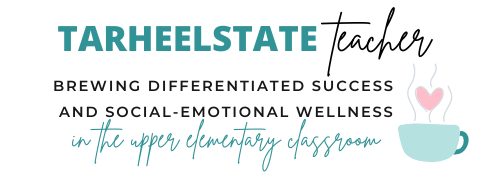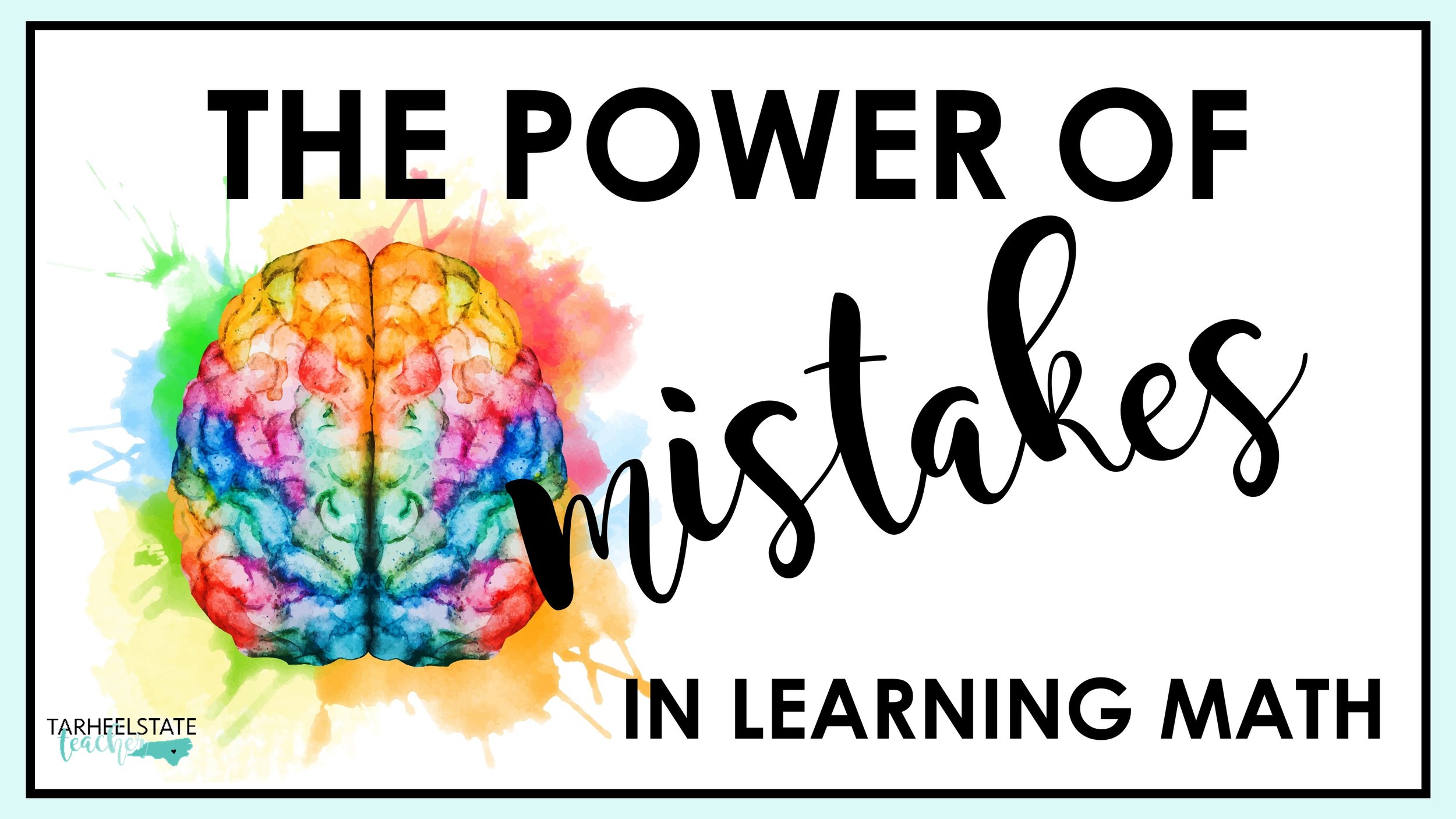The Power of Mistakes in Learning Math
Is it possible to fall in love with students' mistakes in math class? As a math teacher who wants my students to have a high level of accuracy and understanding, this idea may have once sounded crazy! But, with a little thought about what it really means when students make mistakes, and thinking about how I usually respond to student mistakes, I've got 8 (or more) awesome reasons why we should consider mistakes a valuable teaching tool in our mathematics classrooms!
Note: Some of the links in this post are affiliate links. This means that I am a participant in the Amazon Services LLC Associates Program, an affiliate advertising program designed to provide a means for sites to earn advertising fees by advertising and linking to amazon.com. Read my full disclosure here.
This post is inspired by our summer book study of Becoming the Math Teacher You Wish You'd Had: Ideas and Strategies from Vibrant Classrooms (Tracy Zager). This week, Brittany and I are discussing Chapter 4: Mathematicians Make Mistakes in our Upper Elementary Math Teachers Facebook Group where we are going live each Wednesday this summer to discuss the book.
Just now finding out about us? No worries! I'll let you know how to get the Becoming Math Guidebook and Completion Tracker at the end of this post. All of the video discussions are archived in the group and you can jump in and catch up ANYTIME!
Now, before I get into why Mistakes are Valuable, I want to make sure to clarify the kind of mistakes this chapter and this blog post is focused on.
Today's blog post is not about computational errors but about mistakes that reveal conceptual misunderstandings. (Chapter 5 addresses how to handle errors in a positive way and how we can teaching students the importance of precision in math.)
8 Reasons Why Students' Mistakes in Math Class are VALUABLE
New Questions, New Understandings: Mistakes lead to new questions and new understandings. Often mistakes allow it to come to light that a concept students think they understand or "get" is not actually deeply understood or mastered.
Creates an opportunity to develop deeper understanding. "Teachable, interesting, juicy mistakes" allow us insight into our students' misunderstandings and an opportunity to teach and guide them to deeper understanding.
Without a healthy attitude towards mistakes, it will be challenging to develop critical thinking and risk takers! The alternative to our students making mistakes is a classroom full of students who need to follow our lead step-by-step, who are afraid to step out on their own, like robots who cannot move forward or cross metaphorical bridges without our "instruction manual". This most likely sets up a classroom environment where students don't want to "take risks" and who resist getting started with tasks that require critical thinking or developing their own plan of action.
Students will still (eventually) get to the correct answer, but MATHEMATICAL REASONING is the focus when mistakes and misconceptions are valued. The focus is now on mathematical reasoning, making connections, evidence for thinking, and constructing mathematical arguments, and being able to talk about your thinking!
A mistake is an example of something that does not work. Discovering a mistake is an example of something that doesn't work. Non-examples (things that don't work) can be just as valuable as examples that are mathematically correct.
Mistakes in thinking can reveal patterns and connections that you probably wouldn't have seen otherwise. Imagine students realizing, "Ohhhhh, that's why I was thinking that. My answer is wrong, but I saw a pattern that I followed through on." (One of the classroom snapshots in the book is a great example of this!)
Mistakes lead you to another path. Digging into your mistakes and understanding the thought process behind why you made that mistake can show you another path that is correct AND will most likely prevent you from making the same mistake in the future because you have learned the WHY AND HOW from your mistake!
And lastly, A MATH CLASS WITHOUT MISTAKES WOULD BE REALLY BORING!! If students were not making mistakes in math class, I would wonder if I am challenging them enough and if I am presenting mathematical tasks that are rich enough to BRING OUT mathematical misconceptions! It's important that WE DO make conscious choices in how we bring out mathematical misunderstandings and mistakes!
Now, to develop a healthy relationship with mathematical mistakes, it's important that we teach our students how to react to mistakes. Students will internalize how we handle and approach mistakes. Our tone and response to their mathematical mistakes is important!
In Becoming Math, Tracy tells us,
"Students often lurch through a bunch of misunderstandings while they try out different ideas and actively make sense of mathematics. And---how we respond to those mistakes is often what separates a negative math classroom from a positive one (pg 56)."
and
"Mistakes are golden opportunities for students to examine and refine their mathematical thinking. Teach students how to react to mistakes.It is rare for students to know how to turn a mistake into productive learning and growth (pg 57)."
She advises that we have three main goals in the "mistake making" area:
1. Teach students to take mistakes in stride.
2. Teach students to keep going when they realize they’ve made a mistake. They need to get to the bottom of their misunderstandings with tenacity, determination, and curiosity until they understand exactly why their reasoning was flawed.
3. Teach students to make the most of the knowledge and experience they gained by figuring out their mistake. Now they can develop better reasoning and improved methods that yield results.
Chapter 4 of Becoming Math includes two powerful classroom snapshots where mistakes are handled constructively by the teacher--if not celebrated as interesting mathematical thought.
In one of the example stories, a student found an interesting mathematical pattern in the problem they were working on--this only happened because the teacher gave her time to pursue her mistake. Because the student was brave enough to continue down her path of understanding trying to get to the bottom of her thinking, EVERYONE was able to see another pattern in the problem. Deeper math thinking with her mistake created deeper connections between two math concepts. Rather than the teacher jumping in with a step-by-step of how the problem should have been solved to get to the right answer, students were given the time and space to grapple with misunderstanding. We discuss this snapshot in-depth in our Facebook Live chat.
Pin this post for later so you can come back to it and share it with friends!
If learning to use mistakes in math class more effectively is something that you are intrigued by, I encourage you to grab the book and read chapter 4! (I know I am now more intrigued about how to use mistakes more effectively!)
Want to catch the replay of our Facebook Live? Be sure to join the group (answer the questions to let us know you are not a bot :), and find the link to our Mathematicians Make Mistakes Chat here.


